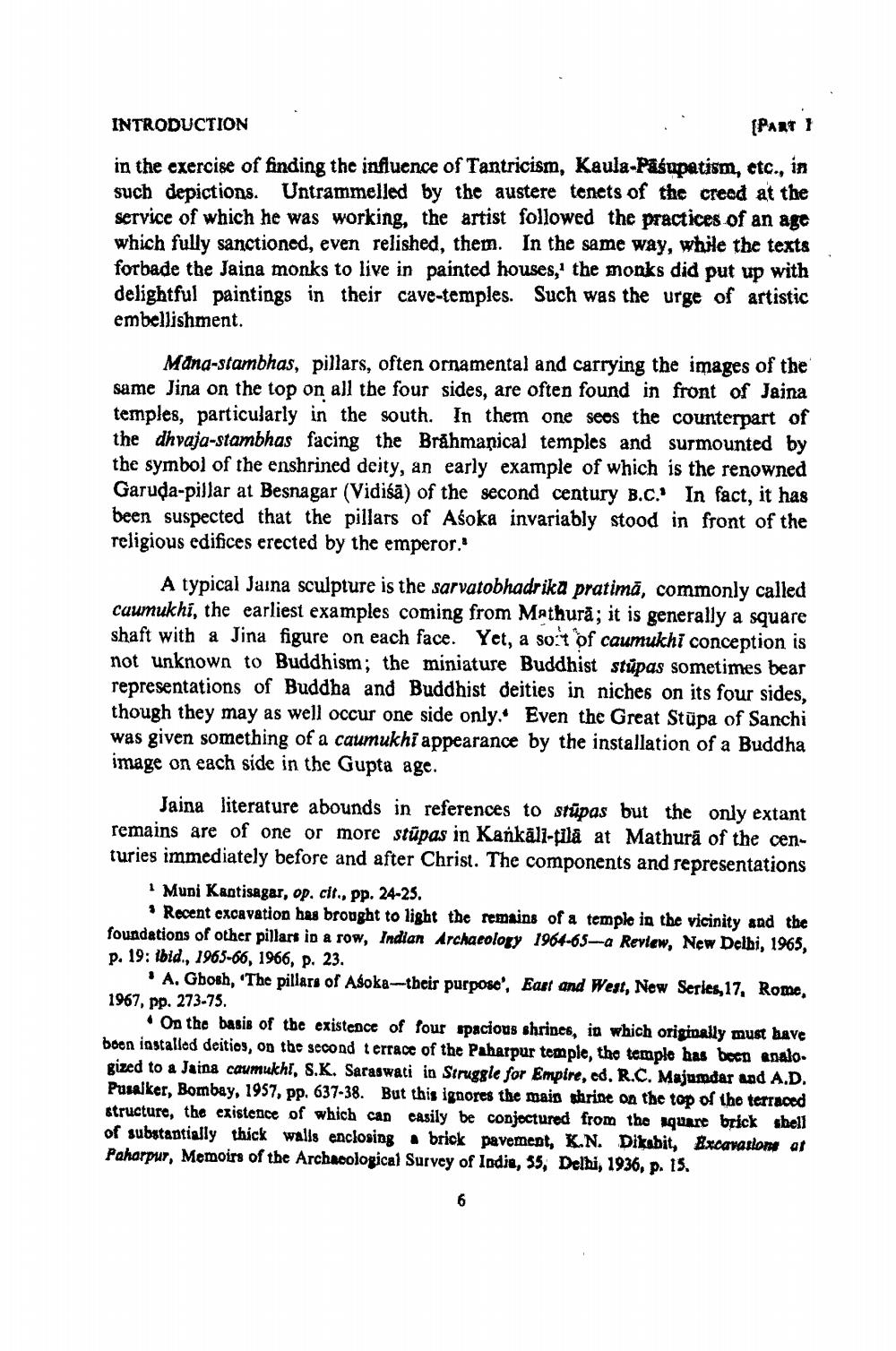________________
INTRODUCTION
[PART 1
in the exercise of finding the influence of Tantricism, Kaula-Pasupatism, etc., in such depictions. Untrammelled by the austere tenets of the creed at the service of which he was working, the artist followed the practices of an age which fully sanctioned, even relished, them. In the same way, while the texts forbade the Jaina monks to live in painted houses,' the monks did put up with delightful paintings in their cave-temples. Such was the urge of artistic embellishment.
Mana-stambhas, pillars, often ornamental and carrying the images of the same Jina on the top on all the four sides, are often found in front of Jaina temples, particularly in the south. In them one sees the counterpart of the dhvaja-stambhas facing the Brahmanical temples and surmounted by the symbol of the enshrined deity, an early example of which is the renowned Garuda-pillar at Besnagar (Vidiśā) of the second century B.C. In fact, it has been suspected that the pillars of Ašoka invariably stood in front of the religious edifices erected by the emperor."
A typical Jaina sculpture is the sarvatobhadrika pratimă, commonly called caumukhi, the earliest examples coming from Mathura; it is generally a square shaft with a Jina figure on each face. Yet, a sort of caumukhi conception is not unknown to Buddhism; the miniature Buddhist stupas sometimes bear representations of Buddha and Buddhist deities in niches on its four sides, though they may as well occur one side only. Even the Great Stupa of Sanchi was given something of a caumukhi appearance by the installation of a Buddha image on each side in the Gupta age.
Jaina literature abounds in references to stupas but the only extant remains are of one or more stupas in Kankali-tila at Mathura of the centuries immediately before and after Christ. The components and representations
1 Muni Kantisagar, op. cit., pp. 24-25.
Recent excavation has brought to light the remains of a temple in the vicinity and the foundations of other pillars in a row, Indian Archaeology 1964-65-a Review, New Delhi, 1965, p. 19: ibid., 1965-66, 1966, p. 23.
A. Ghosh, 'The pillars of Asoka-their purpose', East and West, New Series,17, Rome, 1967, pp. 273-75.
On the basis of the existence of four spacious shrines, in which originally must have been installed deities, on the second terrace of the Paharpur temple, the temple has been analo. gized to a Jaina caumukhi, S.K. Saraswati in Struggle for Empire, ed. R.C. Majumdar and A.D. Pusalker, Bombay, 1957, pp. 637-38. But this ignores the main shrine on the top of the terraced structure, the existence of which can easily be conjectured from the square brick shell of substantially thick walls enclosing a brick pavement, K.N. Dikabit, Excavations at Paharpur, Memoirs of the Archaeological Survey of India, 55, Delhi, 1936, p. 15.
6




